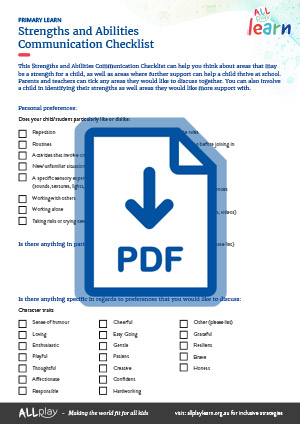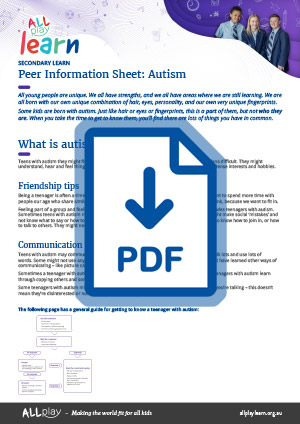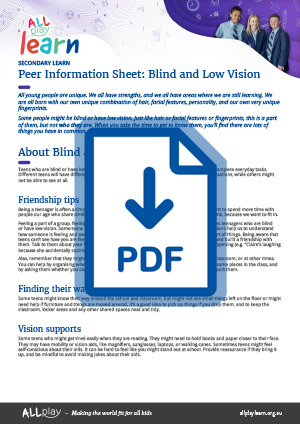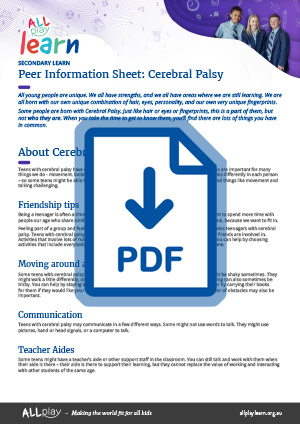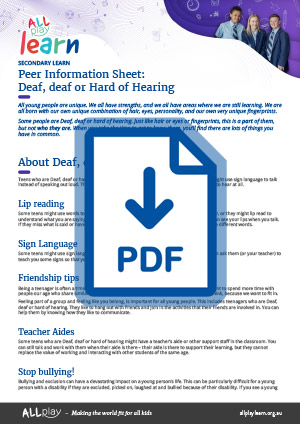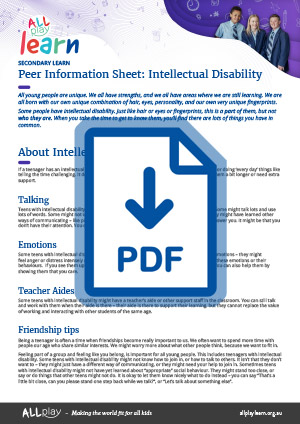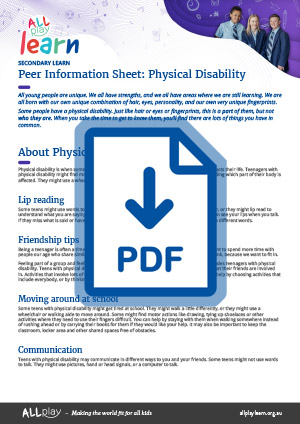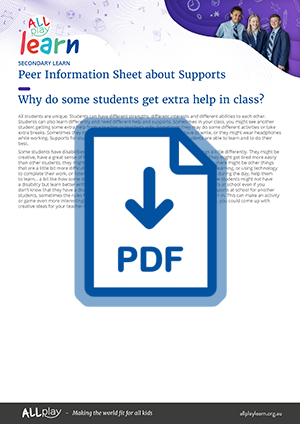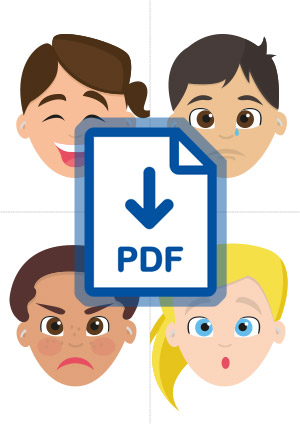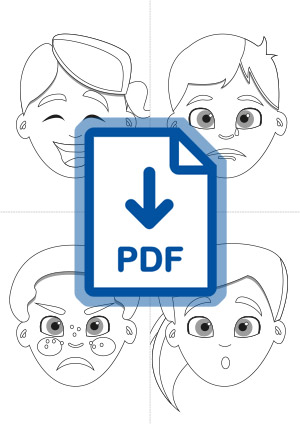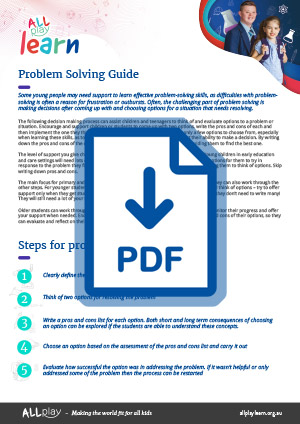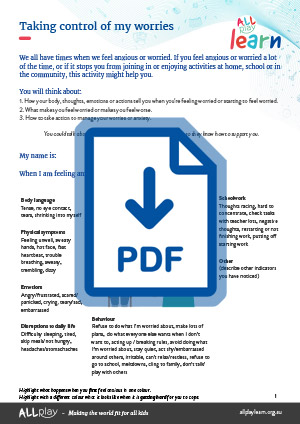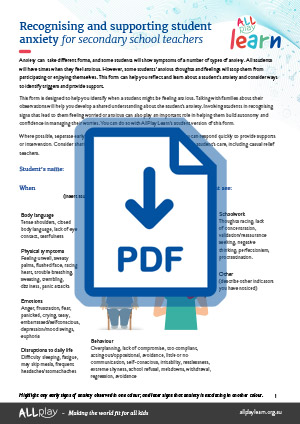
Parent
Resources
Welcome to our resources page!
Here you will find a range of posters, handouts and more to support the inclusion of teenagers with disabilities and developmental challenges.

Stories
We provide a range of stories that help students manage some of the challenges or changes they may experience in secondary school. Each story comes with audio so that students who are blind and low vision, or find reading challenging, can still access these stories.


Inclusion resources
Organisation can be important in secondary school, so we have a locker checklist poster. We also provide a strengths and abilities communication checklist to facilitate communication between teachers and parents.

Disability information sheets
If planning to disclose your child’s diagnosis to their peers, download information sheets so peers can learn more about how they can be inclusive.

Supporting wellbeing
We provide resources to help students learn how to manage their emotions and problem solve. We also have posters celebrating the strengths of students, and you might also like to show your child the AllPlay Learn student site, where they can access information about seeking help.

Recognising and supporting anxiety
AllPlay Learn’s Recognising and supporting student anxiety forms help teens (and teachers and families) to reflect on:
- a teen’s early signs that they are feeling anxious
- later signs that their anxiety is escalating
- triggers or contributors to the teen’s anxiety
- strategies that may be effective at specific timepoints
Communication between schools and families about observations will help you develop a shared and richer understanding about your child’s anxiety. Involving your child in recognising and responding to signs of anxiety can increase their autonomy and confidence. Some teens may complete these forms independently, while others may find working with a trusted teacher, family member or health professional (e.g. their psychologist) helpful.
These forms can be used to support collaboration and communication across teaching staff at your child’s school, which can help create consistent supportive environments that foster your child’s sense of security and capability in managing their anxiety.
Some secondary students may prefer a form that uses simpler and more concrete language, while others may prefer more detailed and abstract descriptions. Consider your child’s preferences and abilities when selecting a form.

